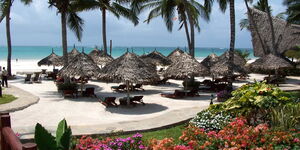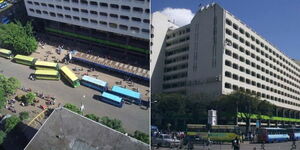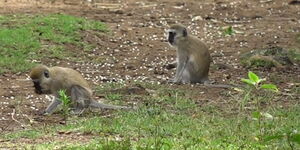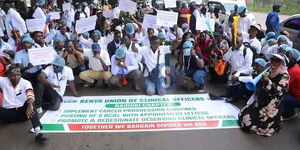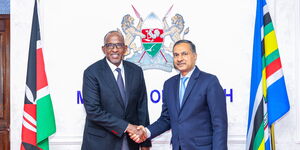The National Environment Management Authority (NEMA) has warned of traffic disruption, air pollution and flooding from the government’s proposed design and construction works along the Nairobi Rivers Basin.
The Ksh40 billion project, a pet project of President William Ruto, involves river dredging, widening riverbanks, expanding sewage treatment, and landscaping and is expected to be completed by 2027.
According to the Environmental Impact Assessment (EIA) notice published on Monday, September 9, the project will also include the expansion of Kariobangi sewage treatment by constructing an additional 60,000m³ per day system and the expansion of the Kirichwa West treatment system.
The works are expected to raise the city’s sewage handling capacity while also tackling the flooding crisis that rocks most parts of the capital and erosion along the Nairobi, Mathare and Ngong rivers.
But as hopeful as the project's gains sound, NEMA warns that it will cause “soil erosion and sedimentation” during dredging and points out that “improper connectivity, river dredging, widening riverbank protection and stabilisation” could lead to downstream siltation and flooding if not carefully managed.
Furthermore, the authority foresees air quality problems from dust, machinery emissions, and odours, as well as noise pollution affecting nearby communities. To combat these, NEMA has recommended regularly watering exposed soil surfaces and prohibiting the idling of vehicles.
According to the report, the authority has found that leaks or discharges of oils, paints, sewage, and other hazardous materials into the storm drains or directly into rivers could plague the project.
One emerging concern from the ambitious project is the likely eviction of Kenyans living along the riverbanks, with the project documents indicating a riparian land of 30 metres on either side of the rivers.
Our review of the maps and areas to be touched by the Nairobi Rivers Basin project shows neighbourhoods adjacent to the Kariobangi sewage treatment plant, including Kariobangi North, Dandora, Baba Dogo and Mathare, are set to experience the most direct impact.
These areas have historically borne the brunt of untreated effluent and flooding during heavy rains, and the expanded system is projected to ease pressure on ageing facilities. However, the widening of riverbanks is likely to trigger fresh concerns about possible displacement in informal settlements that line the corridors.
The Kirichwa West expansion will primarily affect upmarket estates such as Kileleshwa, Riverside, Kilimani and parts of Upper Hill, where the old treatment plant is overstretched.
Last year, the government had promised not to evict anyone without paying for their relocation after protests emerged. It remains unclear whether or not the multi-billion shilling project will keep this promise.
NEMA has, among other recommendations, asked the Ministry of Defence to ensure all waste storage must be secure and bunded, with no direct discharge into water bodies, and that spill kits be available at all work sites.
The authority also recommends that construction works be staggered to “minimise simultaneous access blockages at the same locality.”
Nema has invited Kenyans to comment on the proposed project before any approval is granted. The notice invites public comments within 30 days with reference number NEMA/EIA/5/2/2345.

